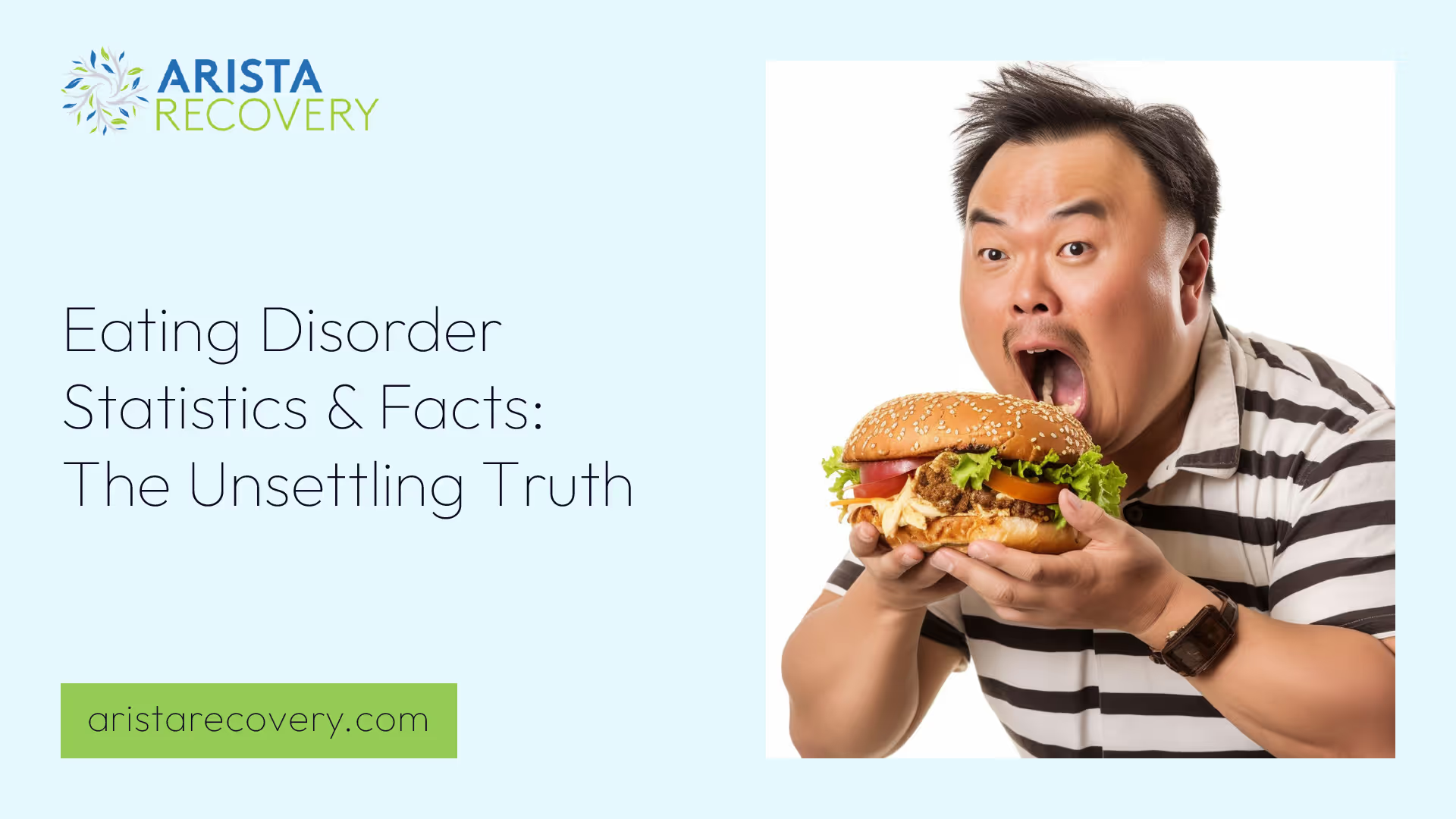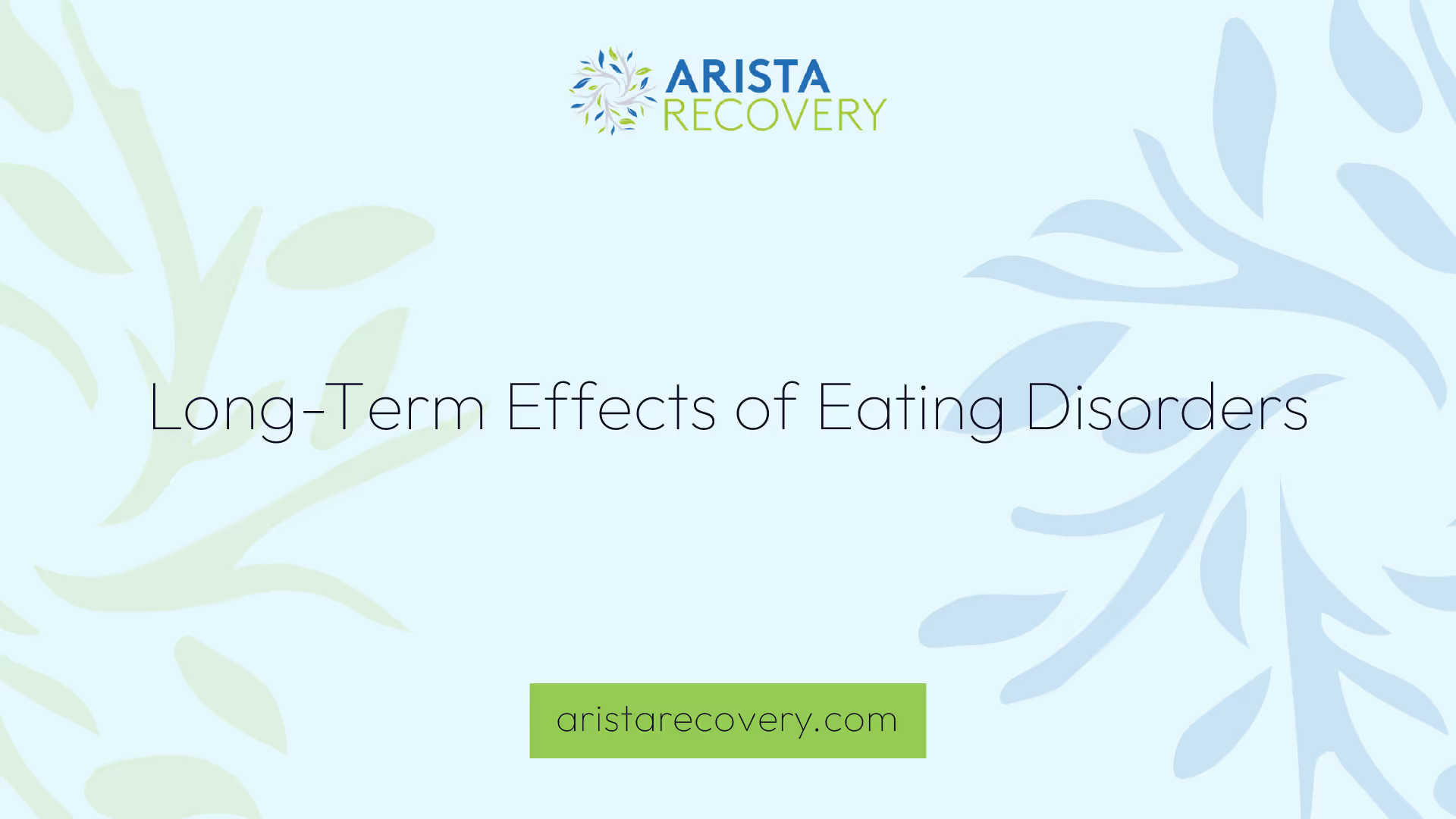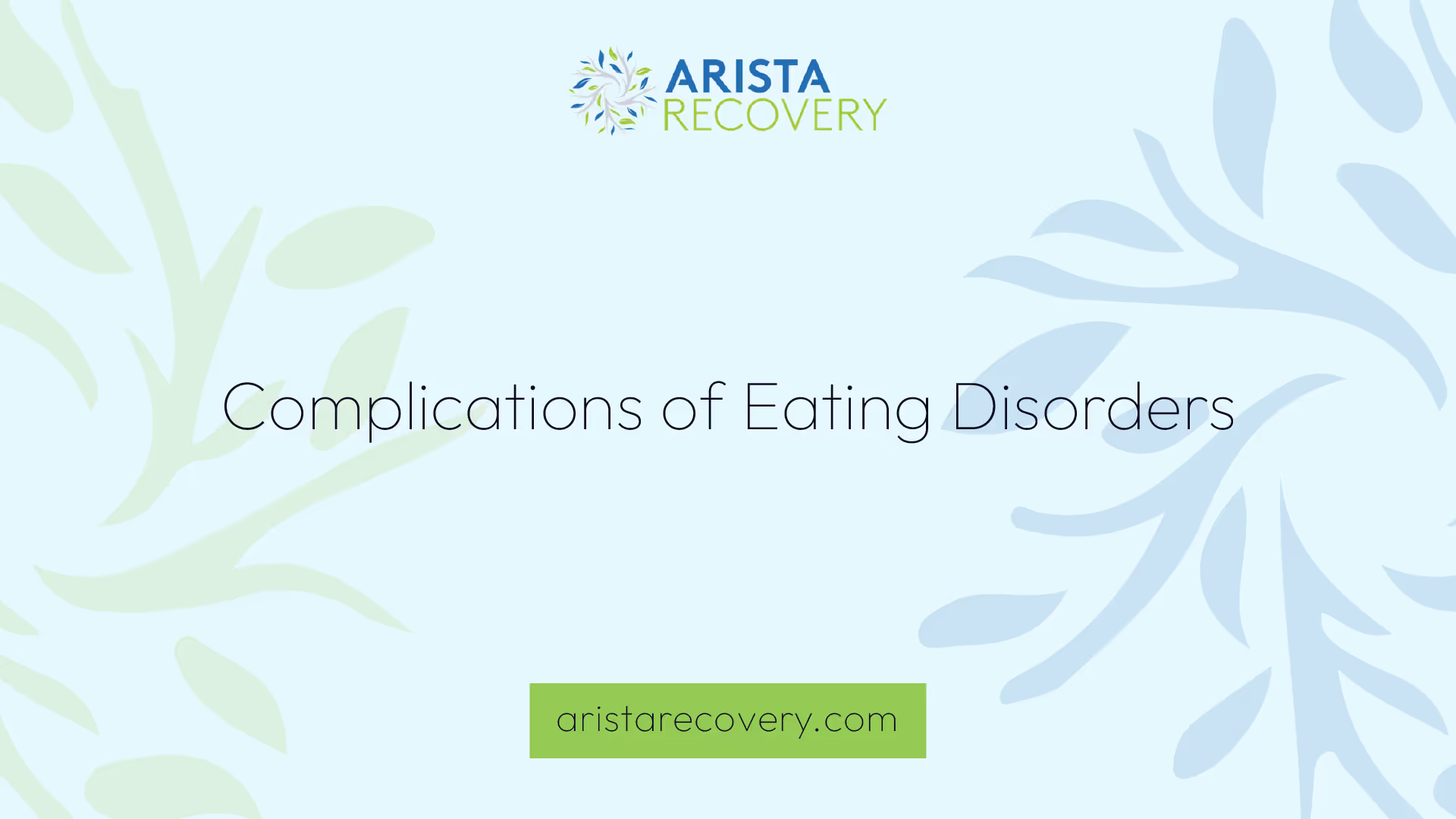Eating Disorder Statistics & Facts: The Unsettling Truth

Understanding Eating Disorders
Eating disorders are complex conditions that are often misunderstood. This section aims to provide a clear understanding of these disorders, their definition, and their impact on individuals.

Definition and Overview
Eating disorders are serious health conditions that affect both physical and mental health. They involve problems in how individuals think about food, eating, weight, and shape, leading to dangerous eating behaviors that affect overall health, emotions, and daily functioning [1].
The most common types of eating disorders include anorexia nervosa, bulimia nervosa, and binge-eating disorder. Anorexia nervosa is characterized by an unhealthy low body weight, intense fear of gaining weight, and unrealistic views of weight and shape. Bulimia nervosa includes episodes of eating a large amount of food (bingeing) followed by behaviors to prevent weight gain (purging), while binge-eating disorder involves consuming large quantities of food in a short amount of time with no control over eating, but without any purging behaviors.
Eating disorders affect individuals of all genders, ages, classes, abilities, races, and ethnic backgrounds, underscoring the diverse range of people impacted by these serious, biologically influenced illnesses. However, it's important to note that recovery from an eating disorder is achievable [2].
Impact of Eating Disorders
Eating disorders can cause a wide variety of complications, some of which are life-threatening. The severity and duration of the disorder increase the likelihood of serious complications. These complications may include issues with the heart, digestive system, bones, teeth, and mouth. Eating disorders are also associated with other mental health conditions such as depression, anxiety, self-harm, and suicidal thoughts and behaviors.
The impact of these disorders extends beyond the individuals affected; they also have profound effects on family members, friends, and society at large. Understanding these 'eating disorder statistics & facts' is the first step towards advocating for better resources, treatment, and support for those affected.
For more insights into how behavioral health issues can affect people's lives, we encourage you to explore our resources on video game addiction statistics & facts, statistics about drug abuse & facts, and current alcoholism statistics & facts.
Statistics on Eating Disorders
Eating disorders are a prevalent issue in the United States, affecting individuals across all age groups. These conditions not only impact a person's physical health but also have severe psychological repercussions. Understanding the statistics related to eating disorders is critical to raise awareness and improve treatment outcomes.
Prevalence in the USA
A long-term study conducted on adolescent girls in the United States provided significant insights into the prevalence of eating disorders. The study tracked a group of 496 girls over a span of eight years and found that by the age of 20:
- 5.2% of the girls met criteria for DSM-5 Anorexia Nervosa
- 13.1% for Bulimia Nervosa
- 8.6% for Binge Eating Disorder
The research indicates that eating disorders are more common than one might presume and stress the need for early detection and intervention.
Disorder TypePrevalence (%)Anorexia Nervosa5.2Bulimia Nervosa13.1Binge Eating Disorder8.6
Recovery Rates and Treatment Seeking
When it comes to recovery, the statistics are mixed. With treatment, about 60% of patients make a full recovery. However, it is alarming to note that only 1 in 10 people with an eating disorder will seek and receive treatment. This gap between the prevalence of eating disorders and the rate of treatment-seeking is a significant concern. It highlights the need for increased awareness, improved access to care, and reduced stigma related to these disorders.
These statistics on eating disorders underscore the severity of these conditions and the urgent need for comprehensive care and support. For a broader understanding of similar issues, you may want to explore our articles on video game addiction statistics & facts, statistics about drug abuse & facts, current alcoholism statistics & facts, and addiction relapse rates in the united states.
Types of Eating Disorders
Eating disorders are serious mental and physical health conditions that require appropriate understanding and attention. This section will discuss three main types of eating disorders: Anorexia Nervosa, Bulimia Nervosa, and Binge Eating Disorder.
Anorexia Nervosa
Anorexia nervosa is characterized by an unhealthy low body weight, an intense fear of gaining weight, and a distorted perception of weight and shape. People with this disorder may see themselves as overweight, no matter how thin they become.
Anorexia nervosa is further categorized into two subtypes: the restricting type and the binge eating and purging type. The restricting type involves severe restriction of food intake, while the binge eating and purging type involves episodes of binge eating or purging behaviors such as self-induced vomiting or the misuse of laxatives [4].
Bulimia Nervosa
Bulimia nervosa involves individuals eating large amounts of food in a limited period of time, followed by purging behaviors such as vomiting, taking laxatives, or excessive exercise to compensate for the calories consumed.
The long-term effects of bulimia nervosa can lead to serious negative effects on the body, including tooth decay, gum disease, blood vessel bursts in the eyes, swollen salivary glands, esophagus damage, stomach issues, intestinal damage, and heart problems.
Binge Eating Disorder
Binge Eating Disorder (BED) is another type of eating disorder that involves eating large amounts of food rapidly, in secret, and until uncomfortably full, despite not feeling hungry. Unlike bulimia nervosa, people with BED do not regularly use unhealthy compensatory measures (like purging) to counter the calories consumed.
BED is the most common eating disorder in the United States. It's associated with obesity, although not everyone with BED is overweight.
Understanding these different types of eating disorders is crucial for recognizing signs and symptoms in oneself or others. It's important to remember that these conditions are serious and require professional medical attention. If you or someone you know is struggling with an eating disorder, reach out to a healthcare provider or a local support group for help.

Long-Term Effects of Eating Disorders
Eating disorders have far-reaching effects on both physical and mental health. These effects can be severe and, in some cases, life-threatening. The following sections delve into the long-term physical and mental health impacts of eating disorders.
Physical Health Impacts
Eating disorders can have numerous long-term effects on the body. For instance, bulimia nervosa, characterized by binge eating followed by purging behaviors, can lead to serious negative effects such as tooth decay, gum disease, blood vessel bursts in the eyes, swollen salivary glands, esophagus damage, stomach issues, intestinal damage, and heart problems.
Additionally, individuals with bulimia nervosa who engage in excessive exercise to purge are at risk of malnourishment, increased risk for injury, muscle fatigue, bone damage, and reduced healing time.
Anorexia nervosa, another type of eating disorder characterized by severe food restriction, can lead to severe impairment in the body's ability to function. It can affect the brain, skin, hair, nails, blood flow, gastrointestinal system, and all major organs [5]. Furthermore, 5-10% of individuals with anorexia nervosa die within 10 years of the onset of the disorder, with men being more at risk of dying due to often being diagnosed later [5].
Mental Health Consequences
Eating disorders not only affect physical health but also have a profound impact on mental health. They are often linked with depression, anxiety, self-harm, and suicidal thoughts and behaviors.
The psychological complications associated with eating disorders can be as severe as the physical complications, and sometimes, even more devastating. The constant preoccupation with food, body size, and weight can lead to feelings of distress and negatively impact a person's quality of life.
These statistics and facts underscore the seriousness of eating disorders and the importance of early detection and treatment. The long-term effects highlight the critical need for comprehensive treatment plans that address both the physical and mental health aspects of these disorders. For information on other forms of addiction and their impacts, you can explore our articles on video game addiction statistics & facts, statistics about drug abuse & facts, current alcoholism statistics & facts, and addiction relapse rates in the united states.
Factors Influencing Eating Disorders
Understanding the factors contributing to the development of eating disorders is a complex process, as they are often a result of a mix of biological, psychological, and sociocultural aspects. In this section, we will explore two significant influences: societal pressures and biological factors.
Societal Pressures
Societal pressures play a critical role in shaping individuals' perceptions of their bodies, often leading to disordered eating patterns. Western beauty standards, heavily influenced by white supremacy, perpetuate ideals of thinness and specific appearances, causing many to feel inadequate or flawed if they don't conform. This can lead to a negative body image and an increased risk of developing an eating disorder [2].
The impact of societal pressures extends beyond just body image. Eating disorders affect individuals of all genders, ages, classes, abilities, races, and ethnic backgrounds (NEDIC), indicating the diverse range of people affected by these serious illnesses.
Studies have also highlighted disparities in eating disorder diagnosis and treatment based on weight status, race/ethnicity, socioeconomic background, and sex among college students. This emphasizes the need for more inclusive and equitable care, acknowledging that bodies do not have to conform to specific appearance ideals to deserve respect.
Biological Influences
Eating disorders, like many other mental health conditions, have a biological component. They are serious, biologically influenced illnesses that affect a wide range of individuals [2].
While the specifics of these biological influences are beyond the scope of this article, it's worth noting that they can include genetic predisposition, hormonal imbalances, and other physiological factors. These can influence an individual's susceptibility to developing an eating disorder, their experience of the disorder, and their response to treatment.
Furthermore, research has shown that there are disparities in access to eating disorders treatment for publicly-insured youth and youth of color. This indicates a need for improved healthcare access and support, echoing the societal pressures highlighted above.
In conclusion, while societal pressures and biological influences play significant roles in the development and manifestation of eating disorders, they are not the sole factors. A comprehensive understanding of eating disorder statistics & facts requires consideration of a range of influences, including psychological factors and individual experiences. For more information on the statistics and facts related to other addictive behaviors, explore our articles on video game addiction, drug abuse, alcoholism, and addiction relapse rates.
Support and Resources
The journey towards recovery from eating disorders can often be challenging and isolating. However, numerous resources and supports are available to provide assistance and guidance during this process.
National Helplines
National helplines offer immediate, confidential support for individuals affected by eating disorders or disordered eating. These helplines can provide resources, referrals, and support to individuals across the country.
In Canada, the National Eating Disorder Information Centre (NEDIC) operates the country's only national toll-free helpline and live chat services, offering an essential support system for those in need [2]. NEDIC emphasizes the importance of respecting all bodies, regardless of their appearance, while acknowledging the impact of societal pressure and white supremacy on Western appearance ideals [2].
In the United States, the National Eating Disorders Association (NEDA) provides a variety of support and education resources. Parents and caregivers of loved ones impacted by eating disorders can access information and guidance through F.E.A.S.T.. Moreover, for crisis intervention related to eating disorders, individuals can call or text the Suicide and Crisis Lifeline at 988 or text "HOME" to 741-741, which also offers Spanish speaking services.
Treatment Options
The path to recovery from an eating disorder often involves a combination of therapy, nutrition counseling, and medical care. Finding the right treatment provider is a crucial step in this journey.
NEDA offers resources to find eating disorder treatment providers in your area or online. Additionally, they provide insurance-covered nutrition counseling through Fay Nutrition with Registered Dietitian Nutritionists. These professionals can provide guidance on healthy eating habits and help individuals develop a positive relationship with food.
Remember, recovery is possible, and help is available. No matter where you are in your journey, reaching out for support can be the first step towards healing. As we continue to delve into eating disorder statistics & facts, it's important to remember that these numbers represent real individuals who deserve understanding, compassion, and support.

Complications of Eating Disorders
Eating disorders, while primarily viewed as psychological disorders, have severe physical and psychological complications that can be life-threatening. The severity and duration of the eating disorder increase the likelihood of these complications [1].
Physical Complications
Physical complications of eating disorders are vast, varying from minor health issues to severe, life-threatening conditions. They can affect major body systems including the heart, digestive system, bones, and teeth, and can lead to other diseases.
Bulimia nervosa, characterized by binge eating followed by purging behaviors, can lead to serious negative effects on the body, including tooth decay, gum disease, blood vessel bursts in the eyes, swollen salivary glands, esophagus damage, stomach issues, and intestinal damage. Individuals engaging in excessive exercise to purge are at risk of malnourishment, increased risk for injury, muscle fatigue, bone damage, and reduced healing time.
Anorexia nervosa, characterized by severe food restriction, can lead to severe impairment in the body's ability to function, affecting the brain, skin, hair, nails, and all major organs, including the heart, liver, and kidneys. The disorder can also cause a decrease in bone density, leading to osteoporosis and fractures. Shockingly, 5-10% of individuals with anorexia nervosa die within 10 years of the onset of the disorder, with men being more at risk of dying due to often being diagnosed later.
Psychological Complications
In addition to physical complications, eating disorders are also associated with significant psychological complications. These may include depression, anxiety, self-harm, and suicidal thoughts and behaviors.
Depression is one of the most common psychological issues faced by individuals with eating disorders. This can be due to the emotional stress and isolation often experienced by those struggling with these conditions. Anxiety disorders, including generalized anxiety disorder, social anxiety, and obsessive-compulsive disorder, are also common.
In severe cases, individuals with eating disorders may self-harm or attempt suicide. It is vital that individuals experiencing these symptoms seek immediate medical attention.
Understanding the potential complications of eating disorders provides insight into the severity of these conditions and the urgent need for effective treatment. For more information on related topics, please visit our articles on addiction relapse rates in the united states, video game addiction statistics & facts, and current alcoholism statistics & facts.
References
[1]: https://www.mayoclinic.org/diseases-conditions/eating-disorders/symptoms-causes/syc-20353603
[2]: https://nedic.ca/
[3]: https://www.singlecare.com/blog/news/eating-disorder-statistics/
[4]: https://www.healthline.com/nutrition/common-eating-disorders
[5]: https://www.eatingdisorderhope.com/long-term-effects-health
[6]: https://doi.org/10.1002/eat.22846
You’re not alone in this.
When mental health challenges and addiction intersect, it can feel isolating. At Arista, we offer compassionate, evidence-based, and trauma-informed care to help you heal, grow, and move forward.
You’re not alone in this.
When mental health challenges and addiction intersect, it can feel isolating. At Arista, we offer compassionate, evidence-based, and trauma-informed care to help you heal, grow, and move forward.
Support that moves with you.
You’ve taken a brave first step. At Arista Recovery, we’re here to help you continue with best-in-class care designed for long-term healing and support.
.webp)






